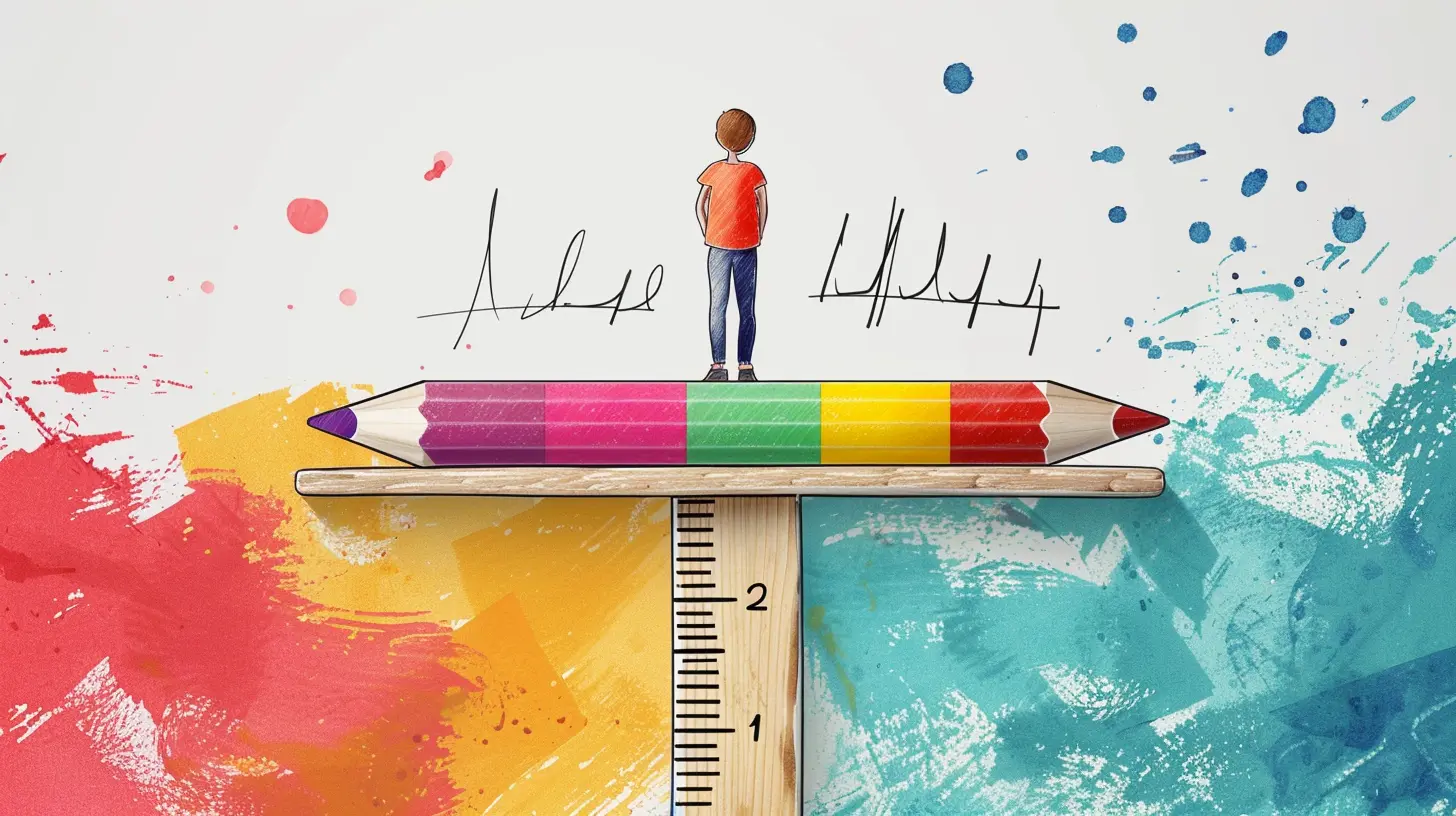How to Balance Formative and Summative Assessments in the Classroom
16 August 2025
Assessments. It’s one of those words that can make both teachers and students squirm a bit. But let’s be real—assessments are the compass of the classroom. They show us where students are, where they’re headed, and help us guide them along the way. The challenge? Striking the perfect balance between formative and summative assessments without tipping the scales too far in one direction. Sounds like juggling flaming bowling pins, right?
Let’s dive into how teachers can achieve that balance without losing their sanity—or their students’ interest.
What’s the Difference Anyway?
Before we can talk balance, we’ve got to understand what we’re balancing.Formative Assessments: The Ongoing Conversation
Formative assessments are like check-ins during a journey. Think of them as the GPS system that recalculates your route when you take a wrong turn. These assessments happen during the learning process. They’re informal, flexible, and meant to provide feedback for learning rather than just of learning.Some classic examples?
- Exit tickets
- Quick quizzes
- Think-pair-share discussions
- Peer reviews
- Observations and journals
These tools help teachers figure out what’s clicking and what’s not—while students are still learning.
Summative Assessments: The Final Destination
On the flip side, summative assessments are the big finish. The end-of-unit test, the final project, the big presentation—these measure what students have learned after instruction is complete. They’re typically more formal and structured.Think:
- Standardized tests
- End-of-term exams
- Final research papers
- Large-scale projects
Summative assessments offer a snapshot of achievement. They help measure progress and usually come with a grade.
Why Balancing Both Matters
Let’s put it this way: relying only on summative assessments is like grading a cake based on how it looks after baking, without ever tasting the batter. You might end up with something that looks amazing but tastes like cardboard.A strong balance between formative and summative assessments allows:
- Real-time feedback so students can grow before it's “showtime.”
- More accurate understanding of student learning.
- Opportunities for students to reflect, revise, and improve.
- Lower-stake checkpoints that reduce test anxiety.
- A classroom culture that values growth, not just grades.
Start With Purpose: Set Clear Learning Goals
So, how do you find the right mix?Begin the way you’d start any good lesson—by knowing where you want to go.
Your learning objectives should guide both your formative and summative assessments. Ask yourself:
- What do I want students to understand?
- What skills should they master?
- How will I know if they’ve reached that point?
Once you've clarified your goals, it becomes easier to check in along the way (formative) and evaluate at the end (summative).
Know Your Audience: Understand Your Students
Every classroom is a different ecosystem. What works for your morning class may flop with your afternoon crowd. That’s why knowing your students’ learning styles, needs, and pace is crucial to balancing assessments.Some students thrive when given multiple chances to show what they know—others perform best under structured conditions. By mixing formative with summative, you give all students a fair shot to shine.
Mix It Up: Blend Assessment Types Strategically
Ever heard the saying, “Don’t put all your eggs in one basket”? That couldn’t be more true when it comes to classroom assessment.Here’s how you can strategically mix formats:
| Formative | Purpose | Tips |
|----------|---------|------|
| Think-Pair-Share | Quick check on understanding | Use during discussions to gauge engagement |
| Exit Tickets | Student reflection | Pose 1-2 questions linked to the day’s lesson |
| Peer Feedback | Collaborative learning | Train students on giving constructive feedback |
| Concept Mapping | Visual understanding | Use before and after a unit for comparison |
| Quizzes | Practice before the big test | Make them low-stakes and allow retakes |
| Summative | Purpose | Tips |
|------------|--------|-----|
| Unit Test | Final checkpoint | Align closely with learning objectives |
| Portfolio | Display of progress | Give flexibility in how students present learning |
| Research Paper | Applied knowledge | Break into smaller chunks with formative feedback |
| Performance Task | Real-world application | Provide clear rubrics and examples upfront |
The blend depends on what you teach, how your students learn, and what you're trying to measure.
Use Formative Assessment to Inform Summative Success
Here’s the power move: use what you learn from formative assessments to shape and improve your summative ones.If your exit tickets show that most students didn’t grasp a concept, don’t plow ahead just to stay “on schedule.” Slow down. Reteach. Give different examples. Provide more practice. Then, when the summative assessment rolls around, your students are better prepared—and you’ve done your job.
Formative data isn’t just for grading—it’s for guiding.
Feedback is Your Secret Sauce
Let’s be honest—no one likes feedback that’s just a letter or a number. It doesn’t help students grow. That’s like telling someone their painting is a “C-” without saying why.Use formative assessments for targeted, actionable feedback. Not just “good job”—but “you explained the main idea really clearly, but let’s work on supporting it with stronger evidence.” See the difference?
This kind of feedback makes summative assessments feel less scary because students have already been coached along the way.
Don’t Let Summative Assessments Dominate
It’s tempting to lean heavily on summatives because they’re measurable, easy to grade, and often required. But if they consume your curriculum, you're doing your students a disservice.Here's why:
- Too many summatives = stressed-out students
- Limited opportunities for revision = missed growth moments
- One-size-fits-all grading = disconnection from actual learning
The goal is to create a learning journey—not a series of pop quizzes and final exams. Keep the big picture in mind: learning, not just grading.
Grading Smarter: Blending Assessment Results
Ever wonder how to actually calculate grades when you’re using both formats?Here are a couple of approaches:
Weighting Scores
- Formative Assessments: 30–40%- Summative Assessments: 60–70%
This method ensures formative checks matter but don’t outweigh the final outcome. It also encourages continuous effort rather than last-minute cramming.
Standards-Based Grading
Instead of averaging everything, assess students on how well they meet each standard or skill. This approach naturally prioritizes formative assessments as tools to help students progress toward mastery.Bring Students Into the Process
Here’s a game-changer: involve students in their own assessment.Teach them how to self-assess and set learning goals. Let them reflect on what they did well and what they’d like to improve. This not only makes assessments more meaningful but also builds metacognition—a fancy word for “thinking about your thinking.”
You might ask:
- What did you find challenging in this unit?
- How did you prepare for your project or test?
- What would you do differently next time?
This kind of reflection makes students active participants in the learning process.
Use Tech to Your Advantage
Technology has opened new doors for balancing assessments. With tools like Google Forms, Kahoot, Flipgrid, and Edpuzzle, you can gather quick feedback, create engaging check-ins, and even automate some assessments.Bonus? These platforms often give you instant insights into who’s getting it—and who’s not—without a mountain of grading.
Build a Culture of Assessment for Growth
Assessments shouldn’t just be events—they should be part of the culture. When students see assessments as tools to help them—not just scorecards—it shifts the entire classroom mindset.Celebrate effort. Reward improvement. Encourage questions. Normalize mistakes. When students feel safe to try, fail, and try again, assessments become learning tools instead of anxiety triggers.
Final Thoughts: Striking the Balance
Balancing formative and summative assessments isn’t about checking boxes or sticking to a formula. It’s about your students. It’s asking:- Is this helping them grow?
- Is this giving me useful information?
- Are students involved in the process?
When you focus on learning over labeling, formative and summative assessments become partners, not rivals. Together, they can create a classroom where students don’t just pass—they progress.
So, take a breath. Experiment. Reflect. Revise. Trust the process—and trust your instincts. You’ve got this.
all images in this post were generated using AI tools
Category:
Formative AssessmentAuthor:

Zoe McKay
Discussion
rate this article
1 comments
Sylas Velez
Stop overthinking assessment balance! Embrace formative feedback for growth and let summative evaluations reflect true mastery. Clear, confident strategies lead to real learning outcomes!
September 6, 2025 at 4:33 AM

Zoe McKay
Thank you for your insightful comment! I completely agree—embracing formative feedback is essential for fostering growth, and clear strategies can enhance learning outcomes effectively.


